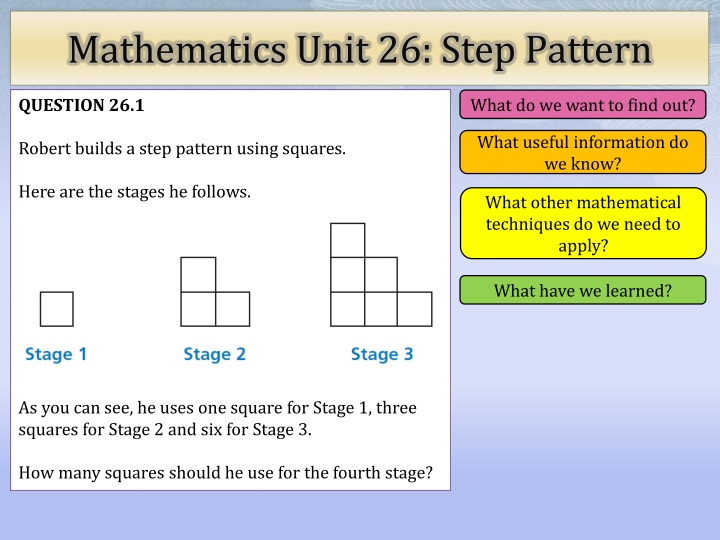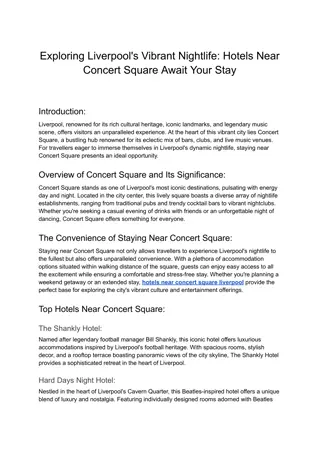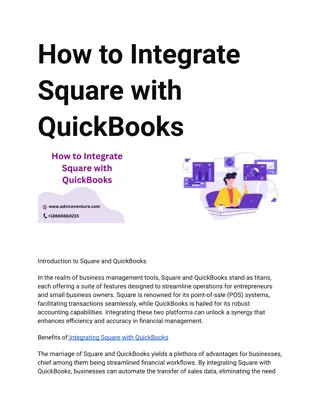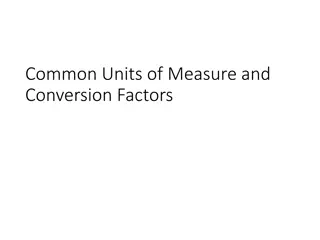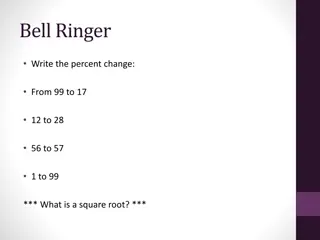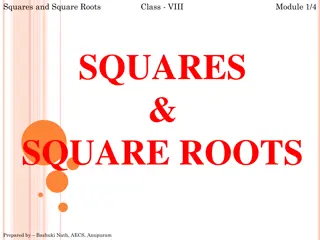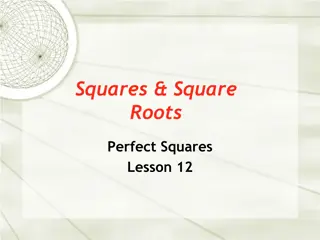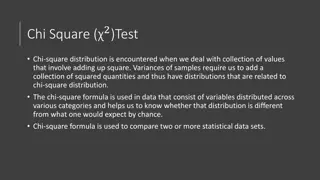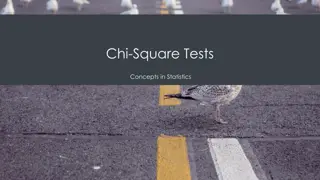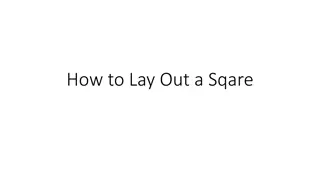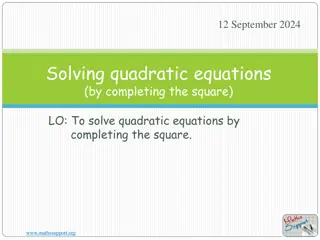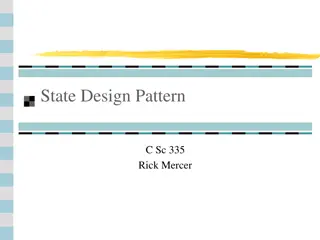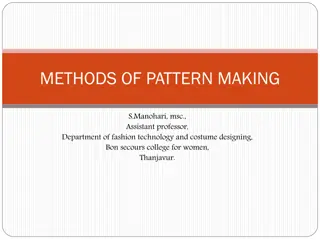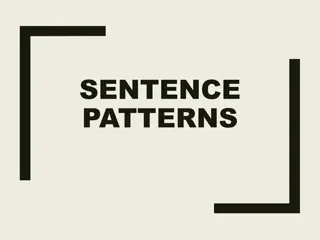Step Pattern: Robert's Square Building
Robert is building a step pattern using squares in different stages. In each stage, he adds a specific number of squares based on a pattern. To find out how many squares he should use for the fourth stage, we need to apply mathematical techniques and analyze the pattern progression. The images provided visually depict the stages of the square building process. Can you figure out the next step in the pattern?
Download Presentation

Please find below an Image/Link to download the presentation.
The content on the website is provided AS IS for your information and personal use only. It may not be sold, licensed, or shared on other websites without obtaining consent from the author.If you encounter any issues during the download, it is possible that the publisher has removed the file from their server.
You are allowed to download the files provided on this website for personal or commercial use, subject to the condition that they are used lawfully. All files are the property of their respective owners.
The content on the website is provided AS IS for your information and personal use only. It may not be sold, licensed, or shared on other websites without obtaining consent from the author.
E N D
Presentation Transcript
Mathematics Unit 26: Step Pattern What do we want to find out? What do we want to find out? QUESTION 26.1 What useful information do we know? What useful information do we know? Robert builds a step pattern using squares. Here are the stages he follows. What other mathematical techniques do we need to apply? What other mathematical techniques do we need to apply? What have we learned? What have we learned? As you can see, he uses one square for Stage 1, three squares for Stage 2 and six for Stage 3. How many squares should he use for the fourth stage?
Mathematics Unit 26: Step Pattern What do we want to find out? QUESTION 26.1 What useful information do we know? What useful information do we know? Robert builds a step pattern using squares. Here are the stages he follows. What other mathematical techniques do we need to apply? What other mathematical techniques do we need to apply? What have we learned? What have we learned? As you can see, he uses one square for Stage 1, three squares for Stage 2 and six for Stage 3. How many squares should he use for the fourth stage? Back to start Back to start
Mathematics Unit 26: Step Pattern What do we want to find out? What do we want to find out? QUESTION 26.1 What useful information do we know? Robert builds a step pattern using squares. Here are the stages he follows. What other mathematical techniques do we need to apply? What other mathematical techniques do we need to apply? What have we learned? What have we learned? As you can see, he uses one square for Stage 1, three squares for Stage 2 and six for Stage 3. How many squares should he use for the fourth stage? Back to start Back to start
Mathematics Unit 26: Step Pattern What do we want to find out? What do we want to find out? QUESTION 26.1 What useful information do we know? What useful information do we know? Robert builds a step pattern using squares. Here are the stages he follows. What other mathematical techniques do we need to apply? What have we learned? What have we learned? As you can see, he uses one square for Stage 1, three squares for Stage 2 and six for Stage 3. How many squares should he use for the fourth stage? Back to start Back to start
Mathematics Unit 26: Step Pattern What do we want to find out? What do we want to find out? QUESTION 26.1 What useful information do we know? What useful information do we know? Robert builds a step pattern using squares. Here are the stages he follows. What other mathematical techniques do we need to apply? What other mathematical techniques do we need to apply? What have we learned? As you can see, he uses one square for Stage 1, three squares for Stage 2 and six for Stage 3. How many squares should he use for the fourth stage? Back to start Back to start
